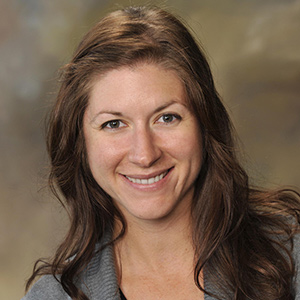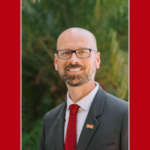By Elizabeth Sage
 The only constant is change
The only constant is change
This is many a meeting planner’s mantra. Our job is to come up with a solid plan and then have equally solid contingency plans B, C and D (sometimes even E and F). Events can be unpredictable and are continuously evolving; it’s interesting to look back and see how far we’ve come over the past decade.
Faster than the speed of light
First, an obvious one: technology. No question, how we use technology in society has evolved in a big way over the past decade, and use of technology in the meetings industry is no different. Fax machines are out, email is in. Cell phones are out, smartphones are in. I am even starting to see business phone calls being replaced with texting and instant messaging. It’s hard to remember a time without online registration, housing and travel websites, virtual meetings and webinars. Social media – which barely existed 10 years ago – now plays a strong supporting role in many conferences. And the apps, oh the apps! Apps to help you plan and organize, apps to calculate room capacities and food & beverage quantities, apps that provide networking opportunities before, during and after an event, apps that incorporate gamification, apps to book flights, apps to book business sessions, the list goes on and on. It’s all very useful and at the same time can be overwhelming. Like most of what a meeting planner does on a daily basis, all we can really do is go with the technological flow.
Movin’ on up
To say our industry has grown is an understatement. In 2004, the U.S. Bureau of Labor Statistics predicted that the hospitality industry would add 17 percent in wage and salary employment. There are now more than 500 hospitality schools in the U.S. offering everything from certifications to Ph.D.s (SDSU provides up to a master’s degree in Hospitality and Tourism Management). I was always good at project management and problem-solving and have strong interpersonal skills so it makes sense that this is my chosen career path. But when I graduated college, I didn’t even know this was an option. Like many people of my generation and older, I fell into this career whereas many of you today have known for years this is what you want to do and can easily find accredited programs to support your pursuits.
Not only are there more job opportunities, but more organizations are implementing strategic meeting management plans and churning out studies on return on investment (ROI) as it relates to meetings, which is leading to increased exposure to our industry. Those floating up at the C-level are taking notice and, in turn, we are seeing more financial investing in conferences. While we’ve always known the value of our work, it’s nice that others are recognizing it too.
It’s easy to be green
Eleven years ago, I started my career as a convention services manager at a hotel. I worked with maybe one client in my three-and-a-half years there who included elements of green meetings or corporate social responsibility (CSR) in their conferences. Today, the meetings industry has the Green Meeting Industry Council, a professional organization dedicated to sustainable event planning, and many companies now have strong CSR and sustainability initiatives. Conference CSR is as simple as donating leftover food and centerpieces to organizations in need or changing out printed pieces in favor of electronic versions. I’ve been to multiple industry events where you’re encouraged to bring your hotel toiletries down to the expo and assemble a bag to be donated to local shelters. My company incorporates a volunteer event into our national conference every year. This year we assembled 1,000 bags of school supplies and donated them to a school charity partner supported by our foundation. Not only is this a great give-back program but we’ve found it to be an wonderful networking opportunity for our attendees. Bottom line: sustainability and giving back matter, and I’m proud to be part of an industry that is stepping up and doing its part.
 It’s a buyers’ market, baby
It’s a buyers’ market, baby
My first job in this industry was in 2003, two years after the September 11, 2001 terrorist attacks on the World Trade Center. Hospitality had taken a major blow following the attacks and people just weren’t doing as many meetings. By 2006, the industry was back in full force, and then the next big hit – the burst of the housing bubble in 2008 and the start of the Great Recession. By early 2010, I felt like my company was one of the first to get back on that meetings horse and had picked up full steam. Sourcing (finding the best location to meet your event needs) was a dream – the world was my ice cream sundae and I could include almost any topping I wanted at a great price … but alas that is no more. The winds have shifted and it’s now the hotels that define conference dates and rates. Those who have been around a long time know that eventually something else will happen to hit the ball back in to the planner’s court. The buyer/supplier relationship is a never-ending cycle almost always dictated by events out of both of our controls.
My meeting, my way
I recently watched a webinar on audience engagement. It was noted that one of a meeting planner’s biggest challenges today is overcoming the second screen. Everyone has at least one device; many of us have two or three. We eat, drive, watch TV and sleep with our Droids, iPhones and tablets within arm’s reach. The second you lose interest in real life, that screen is there for you to engage with. At a conference, you have about five seconds to create an experience your attendees want before they are off creating it themselves with the help of their screens. My conference team has put a ton more time and energy into audience engagement strategies in the past year. TED Talk-style sessions (shortening presenter speaking times from 60 minutes to 20), innovative room sets (mixing in lounge furniture and bean bag chairs) and user-generated content (letting attendees vote via Twitter for the breakout session they want repeated) are all ideas we’ve tested out. You lose your audience, your ROI potential drops, which can eventually lead to attendees and stakeholders finding less value in meetings. I think innovative event strategies will continue to evolve over the next decade as we get sucked more in to the world within our devices.
To learn more about these evolutions and get a hint at what else is coming, check out the Meeting and Event Planning Professional Certificate program at SDSU’s College of Extended Studies.
Just as the industry has evolved, so has the Meeting and Event Planning Professional Certificate program at SDSU’s College of Extended Studies. Now in its 24th year, the program continues to be a solid draw for a solid career path. The Bureau of Labor Statistics projects meeting, convention and event-planner employment growth of 33.2 percent between 2012 and 2022, adding 31,300 more jobs. Learn more at neverstoplearning.net/meeting.




